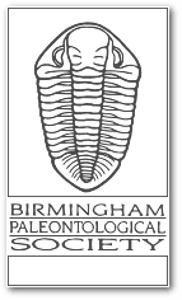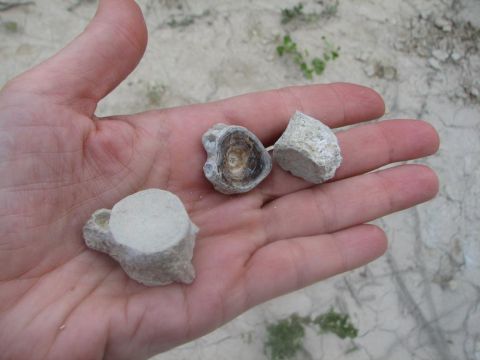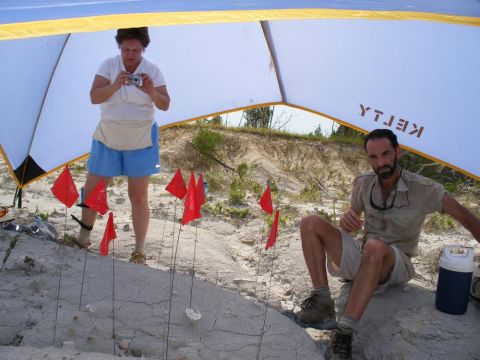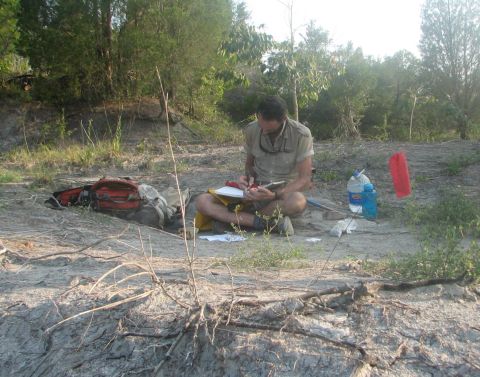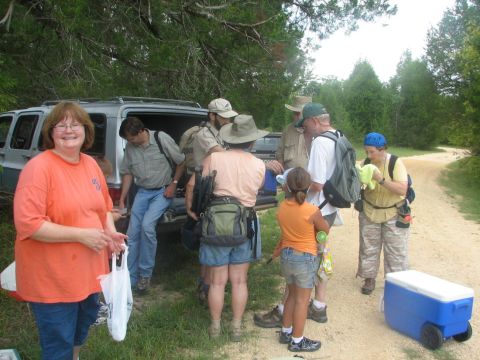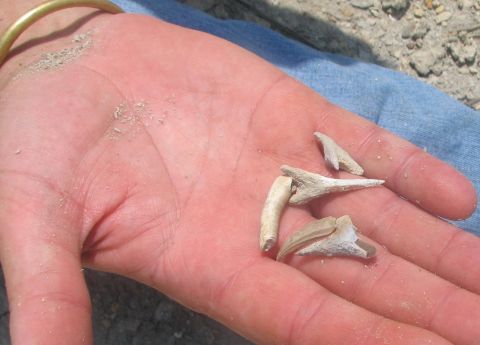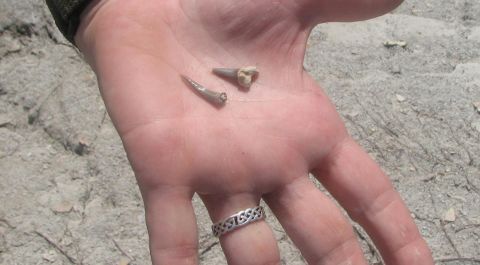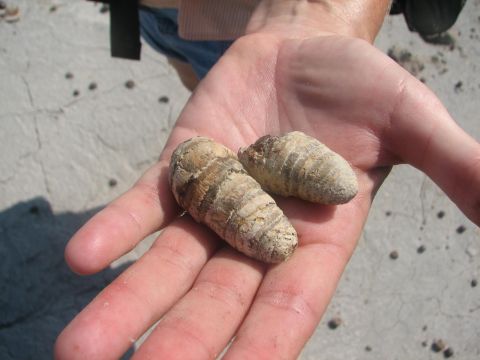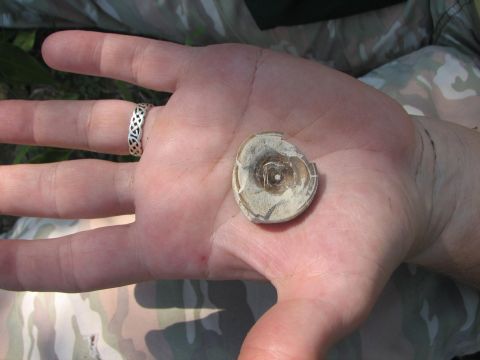Claire has found a Clidases mosasaur jaw, including several teeth, literally laying on the surface of the gully, in eyesight of where we parked our cars.
Visitor
Alabama
08-08-15-jn-tent-1222
An awning was set up over the shark vertebra excavation to provide relief from the relentless glare of the sun.
08-07-vl-1829-logbook
James Lamb recording the finds of the day, including their locations, in his ever-present log book. This day, and our finds, will be preserved for posterity.
August 2, 2008 - Late Cretaceous Fossils, Dallas County, AL
A small group of dedicated fossil hounds arrived in Dallas County to assist James Lamb in searching for ancient bones and teeth of extinct animals in the Late Cretaceous chalk gullies. Suffering miserably in the heat of the day where temperatures were recorded at 109 degrees, our spirits were frequently lifted by the amazing fossils that were being found. We had the opportunity to search in gullies where no one had searched recently. The years of rain and weathering provided a treasure trove of a large variety of fossils, and no one had such a good day as did Claire. After arriving a little late, the first thing after arriving in the gully, she practically tripped over pieces of a fossil fish, including jaw and teeth, that others of us in a bigger hurry had stepped right over. She had her eyes set to find bone, and continued to find very nice specimens throughout the day. Most of the specimens found now reside at the McWane Science Center, where they will be available to researchers around the world.
[This is considered our "July field trip", since it took place between the July and August business meetings.]
Photos courtesy Jan Novak, Claire Smith, Don Hill, and Vicki Lais.
The gangs all here. Weather reports predicting highs of 95+ degrees influenced some people's attendance. I can't imagine why.
- ‹ previous
- 582 of 632
- next ›
08-07-vl-1751-pearl
Leisa has found a tiny pearl and broken shark vertebra. A few pearls like this have been found in the south, but they are very rare.
08-07-vl-1753-shark-teeth-
Badly worn shark teeth and a carina (medial plate) from a lepadomorph barnacle (the pointy item second from the bottom.)
08-07-vl-1711-shark-teeth
Shark teeth found by Claire, Scapanorhynchus texanus and Cretoxyrhina mantelli.
08-07-vl-1696-coprolite
Very detailed shark coprolite specimens were found by several people.
08-07-vl-1782-vertebra
Another shark vertebra found by Claire. NO, we weren't LETTING her find them, she was tuned in to all kinds of fossils on this trip! She was even finding fossils where several of us had scoured the area and found nothing.
